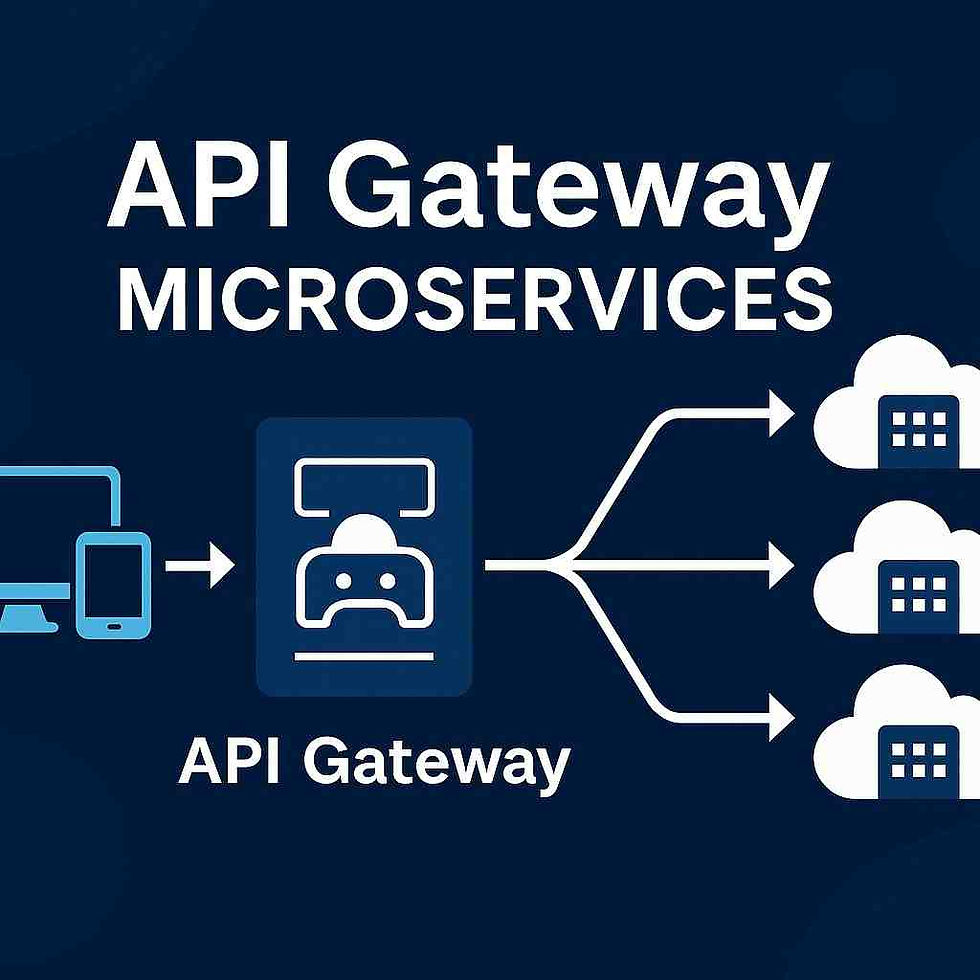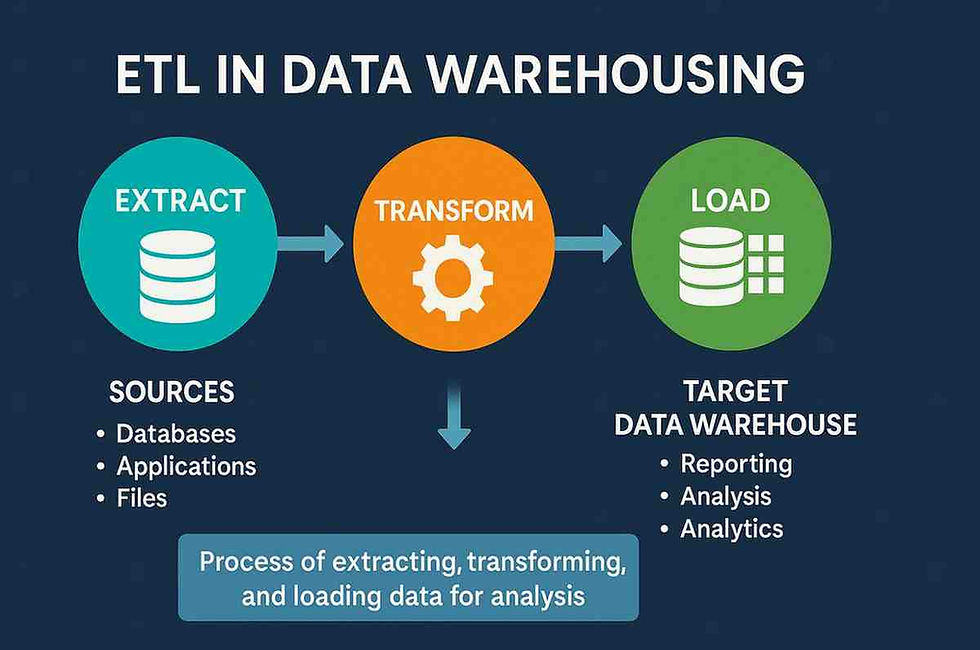Guide to API Health Monitoring for Optimal Performance
- Gunashree RS
- Dec 19, 2024
- 4 min read
APIs (Application Programming Interfaces) are critical in today's interconnected digital ecosystem. APIs play an indispensable role, from powering apps to enabling communication between services. However, ensuring their consistent performance is no simple task. This is where API health monitoring comes into play—a proactive approach to tracking, analyzing, and optimizing API performance.
This comprehensive guide explores API health monitoring, its significance, tools, best practices, and actionable steps to enhance your API’s reliability.
What is API Health Monitoring?
API health monitoring refers to the continuous observation of APIs to ensure they function as intended. This includes evaluating:
Uptime and availability.
Response times.
Error rates.
Throughput and latency.
By implementing health monitoring, developers and organizations can detect and resolve issues before they affect users.

Why is API Health Monitoring Important?
APIs are foundational to modern software systems. Monitoring their health is crucial for the following reasons:
Ensure High Availability: Downtime can disrupt business operations and damage credibility.
Enhance User Experience: Faster response times and fewer errors improve customer satisfaction.
Proactive Troubleshooting: Identify and resolve issues before they escalate.
Compliance and SLAs: Meet performance standards and contractual obligations.
Scalability: Prepare for growing demands by analyzing API performance trends.
Core Components of API Health Monitoring
Uptime Monitoring
Tracks API availability.
Alerts users to downtime incidents.
Performance Metrics
Measures response times, latency, and throughput.
Ensures APIs meet user expectations.
Error Monitoring
Detects issues such as timeouts and HTTP error codes.
Highlights root causes for faster resolution.
Security Metrics
Tracks unauthorized access attempts.
Ensures compliance with data protection regulations.
Traffic Analysis
Monitors request patterns and load balancing.
Identifies potential bottlenecks.
How API Health Monitoring Works
API health monitoring relies on a combination of tools, protocols, and techniques. Here's an overview of the process:
Defining Key MetricsChoose performance indicators such as uptime, response time, and error rates.
Monitoring Tools DeploymentTools like Postman, New Relic, or Prometheus are set up to track API behavior.
Data Collection and AnalysisReal-time data is gathered through logs, requests, and error reports.
Alert System ConfigurationNotifications are triggered when metrics deviate from predefined thresholds.
Reporting and OptimizationRegular reports provide insights into trends, allowing for continual improvement.
Top API Health Monitoring Tools
Postman
Feature: API testing and monitoring.
Strength: Intuitive interface with automated workflows.
New Relic
Feature: Real-time monitoring and error detection.
Strength: Comprehensive performance metrics.
Prometheus
Feature: Open-source monitoring and alerting toolkit.
Strength: Ideal for large-scale deployments.
Datadog
Feature: Full-stack observability platform.
Strength: Integrates API monitoring with infrastructure insights.
Uptrends
Feature: Global uptime and performance testing.
Strength: Cloud-based monitoring solutions.
Best Practices for Effective API Health Monitoring
Define Clear ObjectivesUnderstand what you want to achieve with monitoring, e.g., reduced downtime or faster issue resolution.
Leverage AutomationAutomate monitoring processes for consistency and scalability.
Adopt a Layered Monitoring StrategyCombine synthetic monitoring (simulating user behavior) and real-time monitoring for holistic insights.
Set Realistic ThresholdsCustomize alert thresholds to avoid false positives or missed issues.
Ensure Security ComplianceMonitor for vulnerabilities and enforce encryption for secure API communication.
Review and Optimize RegularlySchedule periodic audits to refine monitoring strategies.
Common Challenges in API Health Monitoring
False PositivesOverly sensitive thresholds can trigger unnecessary alerts, leading to alert fatigue.
Scalability IssuesMonitoring tools may struggle with growing API traffic.
Integration ComplexityConnecting monitoring tools to legacy systems can be challenging.
Data OverloadExcessive data from logs can obscure actionable insights.
Security RisksImproper configurations might expose sensitive data during monitoring.
How to Get Started with API Health Monitoring
Follow these steps to establish a robust API health monitoring system:
Inventory Existing APIsIdentify all APIs used in your ecosystem and prioritize mission-critical ones.
Select the Right ToolsMatch tools to your requirements based on traffic volume, integrations, and budget.
Establish Monitoring ParametersDefine key metrics such as latency, availability, and error rates.
Set Up AlertsConfigure notifications for critical thresholds and anomalies.
Implement RedundancyDeploy backup systems to ensure uptime during failures.
Monitor and Optimize ContinuouslyUse real-time dashboards and periodic reports for fine-tuning.
API Health Monitoring Use Cases
E-commerce Platforms
Monitoring payment gateway APIs to prevent failed transactions.
Healthcare Systems
Ensuring consistent performance of patient record APIs.
IoT Devices
Monitoring APIs used for device communication and data aggregation.
Banking and Finance
Ensuring secure and responsive API operations for online banking services.
The Role of API Health Monitoring in DevOps
In DevOps, continuous integration and continuous deployment (CI/CD) demand robust API performance. Monitoring APIs helps teams:
Identify bottlenecks during testing and deployment.
Validate performance post-deployment.
Enhance collaboration by sharing real-time metrics across teams.
Future Trends in API Health Monitoring
AI-Driven MonitoringPredictive analytics to foresee potential failures.
Edge MonitoringFocus on monitoring APIs at the edge to reduce latency.
Enhanced Security FeaturesAutomated threat detection and response.
Integration with Observability PlatformsConsolidated dashboards for APIs, infrastructure, and application metrics.
Conclusion
API health monitoring is vital for modern businesses, ensuring seamless communication between systems, enhancing user satisfaction, and maintaining robust security. By adopting best practices, leveraging the right tools, and continuously optimizing, organizations can future-proof their APIs against failures and disruptions.
FAQs
1. What are the common metrics tracked in API health monitoring?
Metrics include uptime, response time, error rates, and traffic patterns.
2. Can API health monitoring improve user experience?
Yes, by reducing downtime and ensuring faster response times.
3. What are synthetic and real-time monitoring?
Synthetic monitoring simulates user behavior to test APIs.
Real-time monitoring observes live API performance.
4. Are there free tools for API health monitoring?
Yes, tools like Prometheus and Grafana offer open-source solutions.
5. How does monitoring support API security?
Monitoring detects unauthorized access attempts and vulnerabilities.
6. How frequently should I monitor my APIs?
APIs should be monitored continuously to ensure consistent performance.
7. What is the impact of latency on API health?
High latency affects user experience and may signal server-side issues.
8. Can I monitor third-party APIs?
Yes, monitoring tools can track third-party API availability and performance.
Key Takeaways
API health monitoring ensures uptime, performance, and security.
Tools like Postman, New Relic, and Datadog enhance monitoring capabilities.
Best practices include automation, layered monitoring, and periodic reviews.
Monitoring benefits industries from e-commerce to healthcare.




web web web web web web web web web web web web web web web web web web web web web web web web web web web web web web web web web web web web web web web web web web web web web web web web web web web web web web web web web web web web web web web web web web web web web web web web web web web web web web web web web web web web Web Web Web Web Web Web Web
Health Monitoring for Optimal Performance" could be the secret ingredient to achieving balance between physical endurance and mental clarity. By paying attention to small health cues—like sleep patterns, heart rate, and mood changes—one might uncover hidden areas for improvement. Regular check-ins with medical professionals could also open doors to new wellness options, possibly even around ADHD medication UK depending on one’s focus or attention needs.
It’s about understanding the body’s signals before they become roadblocks. With the right awareness and support, performance might just reach its true potential.
The boutique fitness boom has given rise to a new genre of gymwear: curated, premium, and experience-driven. Studios like Barry’s Bootcamp, SoulCycle, and F45 have launched their own apparel lines, blending brand identity with fashion-forward design. These collections often feature limited-edition drops, bold graphics, and exclusive collaborations with designers or influencers. The goal is to create a sense of community and belonging — wearing the studio’s gear becomes a badge of loyalty and pride. gym hoodies
Very insightful guide on API health monitoring—keeping systems optimized is key to seamless performance. On the wellness side, services like Vaginal Rejuvenation Houston also focus on restoring balance and enhancing overall well-being.
Celebrate your special day with a luxurious yacht birthday party Dubai. Supernova Yachts offers customized décor, music, catering, and entertainment. Whether intimate or grand, enjoy the best birthday bash with the iconic Dubai skyline in the background.